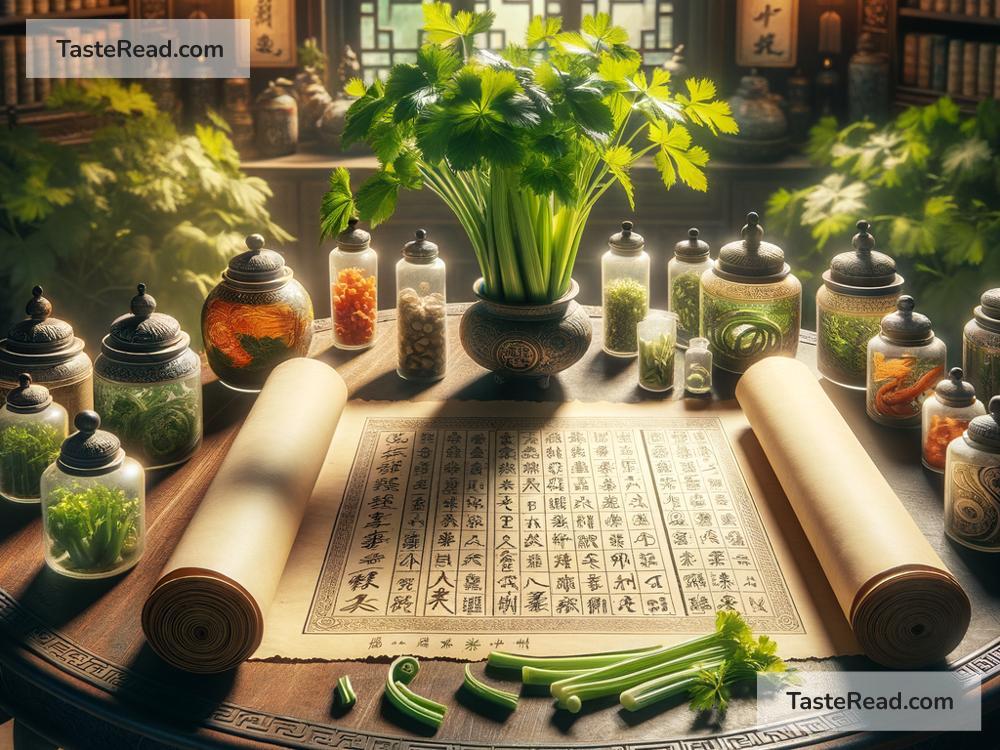The Fascinating History of Celery in Ancient Chinese Medicine
Celery is one of those vegetables that we often see in salads, soups, or even as a crunchy snack. Many people love its fresh, crisp taste, while others might see it as a humble garnish. But did you know that celery has a fascinating history, especially in ancient Chinese medicine? For centuries, this simple green vegetable was not just food—it was considered a powerful tool to heal the body and promote health.
Celery’s Early Roots
Celery has been around for thousands of years. It is believed to have originated in the Mediterranean region, where wild celery grew along the coast. Ancient Egyptians, Greeks, and Romans used celery for medicinal purposes, but its journey into China marked a new chapter in its history.
While it’s not entirely clear when celery was introduced to China, historical records suggest that it became prominent during the Han Dynasty (206 BCE–220 CE). China was a hub of trade, and goods from far-off lands often made their way into Chinese culture. Celery, with its unique flavor and health benefits, quickly captured the attention of Chinese scholars and herbalists.
Celery in Traditional Chinese Medicine (TCM)
In Traditional Chinese Medicine (TCM), the philosophy is that food and herbs can help restore balance to the body. Celery was seen as more than just a vegetable—it was considered a “cooling” food. Chinese medicine classifies foods and herbs as either cooling, warming, or neutral, based on their effect on the body. Cooling foods like celery were believed to help reduce internal heat, calm inflammation, and create harmony within the body.
Here are some ways celery was used in ancient Chinese medicine:
1. Lowering Blood Pressure
One of celery’s most famous uses in TCM was its ability to lower blood pressure. Ancient herbalists noticed that celery seemed to improve circulation and soothe the body’s energy, or “Qi.” Infusions made from celery seeds or the stalk were recommended for people suffering from hypertension. Even today, modern science confirms that celery contains compounds like phthalides, which can help relax blood vessels and promote healthy blood pressure.
2. Promoting Digestive Health
Celery was prized for its ability to aid digestion. In TCM, it was believed that celery could “cool” the stomach and support better digestion, especially in people prone to bloating or discomfort after meals. Ancient recipes often combined celery with ginger (a warming herb), creating a balance to calm digestion while maintaining equilibrium in the body.
3. Detoxifying the Body
Celery was also used for its cleansing properties. In ancient Chinese medicine, it was thought that celery could help the body eliminate toxins, especially in the liver. The idea was that celery helped purify the blood and flush out unwanted substances, leaving the body healthier and more energized.
4. Calming the Mind
In TCM, celery was believed to have calming properties and was often recommended for people dealing with stress or sleeplessness. Ancient Chinese texts describe how celery could cool the “Yang” energy, which is associated with activity and heat, and bring balance by increasing the calming “Yin” energy.
Cooking Celery in Ancient China
Unlike how celery is often eaten raw today, ancient Chinese medicine usually involved cooking herbs and vegetables. Celery might be boiled into teas, soups, or stews, allowing its healing properties to seep into the dish. Recipes were carefully crafted based on the patient’s health, combining celery with other ingredients to create targeted remedies.
For example, celery might be paired with lotus root (another cooling vegetable) for detoxification, or simmered with licorice to enhance its calming effects. These dishes not only provided nutritional benefits but also carried deep symbolic meaning in TCM.
Symbolism and Cultural Significance
Beyond its medicinal properties, celery held symbolic value in ancient Chinese culture. As a green, upward-growing plant, celery was associated with vitality and renewal. This made it popular in meals and ceremonies where wellness and longevity were celebrated.
Celery Today: A Link Between Ancient Traditions and Modern Science
Today, celery is still recognized for its health benefits, and many of the ancient claims made by Chinese medicine have been supported by modern science. Studies show that celery is rich in vitamins, minerals, and antioxidants, which help fight inflammation and support healthy digestion. Its high water content also makes it an excellent hydrating food.
In some parts of China, celery continues to play an important role in cooking and wellness. Families pass down recipes that blend tradition with modern knowledge, keeping celery’s medicinal legacy alive.
Final Thoughts
The humble celery has come a long way from its early days in ancient China. Though it appears simple, it has a rich history as a healing food that supports balance and well-being. Ancient Chinese medicine showed us that even the most basic ingredients can have incredible power when used wisely. Whether raw or cooked, celery holds a special place in both culinary and medicinal traditions.
So the next time you crunch into a stalk of celery, take a moment to appreciate its fascinating story. From ancient Chinese herbalists to modern health enthusiasts, this unassuming green plant has been helping people live healthier, happier lives for centuries.


